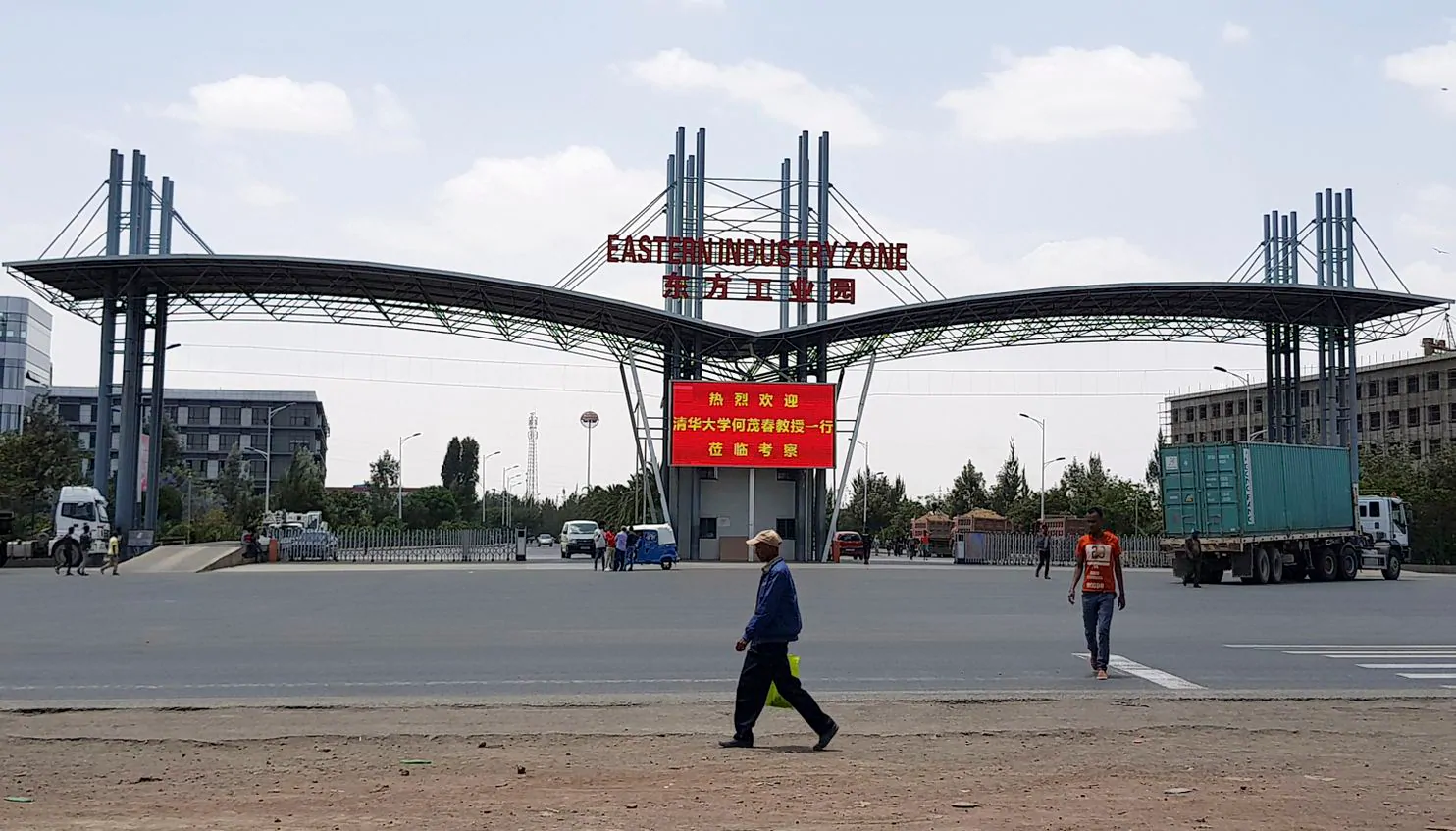A new industry in Ethiopia is creating jobs. But at what cost?

Image collected
Paul Barrett is deputy director of the NYU Stern Center for Business and Human Rights.
For years, the biggest names in apparel have had their clothing made in China, Bangladesh and other countries in East and South Asia. Now, with wages rising in Asia, companies such as Hanes and H&M have identified a new frontier for low-paid labor. The new destination is Ethiopia, to which Asian manufacturers are shifting some of their production capacity on the promise of low labor costs. Entry-level garment workers in Ethiopia typically receive a base salary worth only $26 a month — the lowest, by far, in the worldwide clothing supply chain.
Opened in June 2017, Hawassa Industrial Park (named after the southern lakeside city where it’s located) is one of five huge publicly owned complexes built for the Ethiopian government by Chinese construction companies. Hawassa fronts on a wide street crowded with donkey-pulled carts, rickety three-wheeled taxis and the occasional stray cow. The orderly 300-acre park has 52 hangar-size factories where 25,000 Ethiopians now sew shirts, trousers and sportswear destined for Europe and the United States. There’s capacity to add 35,000 more employees.
But there is good news, too, as I and my co-author Dorothée Baumann-Pauly note in a new report we’ve just published for the NYU Stern Center for Business and Human Rights. As we’ve learned from our own research in Hawassa, the manufacturing center has already created tens of thousands of jobs, with more projected on the horizon. But meager pay levels have contributed to low productivity and high attrition rates. Workers, mostly young women who migrate to the factories from rural villages, have trouble living on what they’re paid, leading many of them to quit and return home.
What’s more, the influx of workers from the countryside has sparked severe price inflation for food and shelter. The cost of renting a bare room with no plumbing near Hawassa increased from as little as $14 a month to as much as $52. One young woman showed us the concrete ground-floor room she and three fellow workers rent from a homeowner. There is no toilet, only an open-air latrine nearby. The woman said she and her roommates work different shifts, and she’d had some of her belongings stolen. Sometimes, she added, there is no food left for her when she returns from the factory. All four women sleep on thin mattresses on the floor, and when it rains, water seeps into the living space.
This is what lies behind the label you may soon see announcing that your clothes were “Made in Ethiopia.” There’s great potential in the social and economic experiment unfolding in East Africa, but it will be fulfilled only if workers are rewarded with higher wages and decent living conditions.
The creation of manufacturing hubs such as Hawassa has brought other problems, too. Some government-employed job recruiters sent to villages have exaggerated what workers can earn at the park, leading to disillusionment when reality hits. “I thought the salary would be much higher. I was not told the truth,” one female worker told us.
Cultural clashes between foreign middle managers and Ethiopian line workers are also common. By all accounts, many foreign supervisors tend to shout at employees. But Ethiopians consider shouting deeply insulting and grounds for quitting. Annual attrition levels in the Hawassa factories have improved but still run from 60 percent to 120 percent (the latter meaning there’s more than complete turnover in just one year).
To be sure, some employers have begun to offer small bonuses for attendance and productivity, as well as allowances for food and transportation. Government officials told us they are considering a minimum wage that would lift the compensation floor for garment workers and other private-sector employees. In addition, the government is preparing a plan under which it would provide free land if foreign manufacturers finance affordable dormitories near the factories.
But Ethiopia’s gamble on garment-making is by no means a sure bet. On top of the other challenges, protests related to the country’s volatile ethnic-identity politics have shut down the Hawassa Park three times in the past year and contributed to strikes at individual factories.
Arkebe Oqubay, a senior government economic adviser and architect of the industrial park strategy, told us his country may not have very long to acclimate itself to the global garment industry. “Pace is critical,” he added. “We need to improve before [foreign] firms become frustrated” and give up on Ethiopia.
One hopes this fear is overblown and that the clothing firms will make a long-term commitment not only to cheaply sourced goods but also to supporting a strong Ethiopian economy in which workers are protected. For that to happen, companies will need to see beyond the short-term lure of the world’s lowest wages. Together with the government, they will have to invest time, talent and resources in addressing the ethnic tension in places such as Hawassa, establish a livable minimum wage that ensures decent living conditions for workers, provide more extensive training for workers and expand worker representation.
“Made in Ethiopia” doesn’t have to be a black mark on Western brands’ human rights records. It’s up to them to take the necessary steps to ensure that it doesn’t become one.
Source: https://www.washingtonpost.com
Tags :
Previous Story
- Bangladesh Automobile Market Competitive Research And Precise Outlook...
- Global Bangladesh Market 2019 Bangladesh Petroleum Corporation, Petrobangla
- Steel industry booming on mega projects
- Get ready for fourth industrial revolution
- Global Bangladesh Market 2019 Share, Growth, Key Manufacturers...
- Bangladesh garment makers ask government to extend export...
- Corporate tax: Bangladeshi entrepreneurs pay highest in South...
- Bangladesh in the post-industrial world